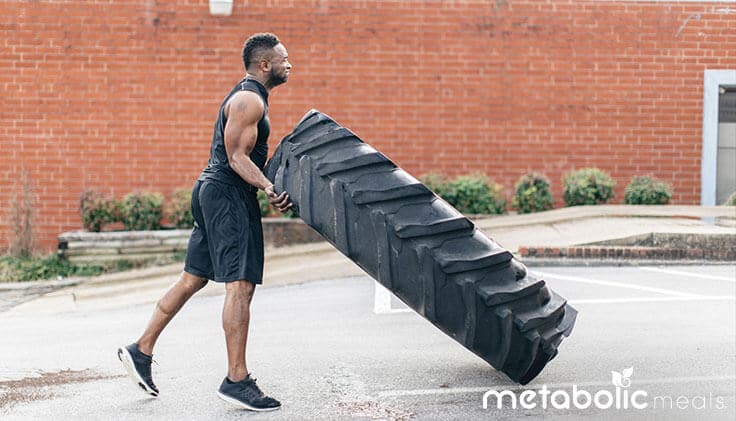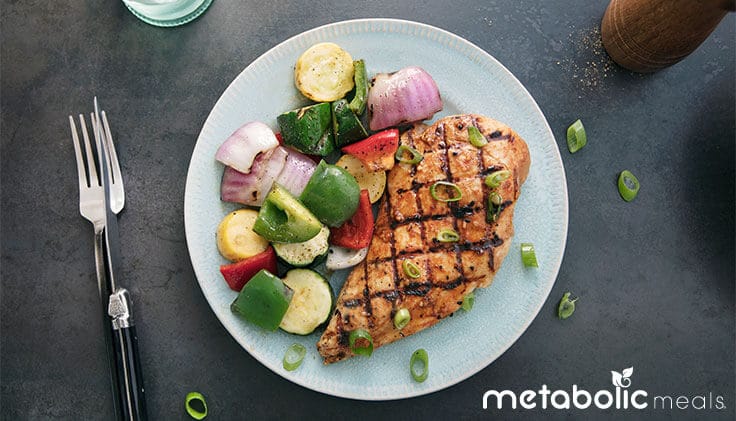ARTICLE AT A GLANCE
High-intensity interval training, aka HIIT, can help you burn fat and boost conditioning quickly and efficiently; in fact, most workouts clock in at 30 minutes or less. If you’re new to high-intensity exercise, you might hold misconceptions that are keeping you from achieving your best results.
This blog dispels the following HIIT myths:
At its core, interval training is simply alternating short periods of high-intensity workouts with longer periods of low-intensity workouts. This tactic is a way to burn more calories, improve endurance, and break up the monotony of your workout routine without adding any special equipment.
The most common type of interval training is high intensity interval training, or HIIT, which alternates between high-intensity exercise and short rest or recovery periods (or intervals). HIIT can be done with sprints, biking, and on cardio equipment, or with weight training or bodyweight exercises. During HIIT workouts, exercisers should hover at or above 80% of their maximum heart rates.

Put in a less technical way: If you can talk during the high-intensity portion of your HIIT interval, then you’re not training hard enough. And because it requires all-out effort, HIIT workouts are shorter — it’s just not possible to maintain the necessary intensity for long periods.
Low intensity steady state (LISS), on the other hand, is what most people envision when they think of cardio exercise. LISS is aerobic activity performed through repetitive motions such as walking, jogging, biking, rowing, stair-climbing, etc., for extended durations (typically 45 minutes to an hour) at low to moderate intensity. Generally, that means staying at or below 70% of one’s max heart rate and being able to hold conversations while working out.
But exercisers planning to integrate interval training into their workout routines often hold misconceptions about it, imagining that everyone needs to put the pedal to the metal with high-intensity bursts, that more effort with less rest is better, and that high-intensity work can cancel out the effects of a subpar diet.
Let’s take a closer look at each of these common misconceptions about interval training and examine why they could be holding exercisers back from their best results.
1. MISCONCEPTION: High-intensity interval training is for everyone.
HIIT is helpful for those looking to lose fat and improve conditioning, but no type of training can be considered “best” for everyone. HIIT isn’t a better option simply because it’s higher-intensity. For beginning exercisers, those with heart or joint health concerns, or those with extensive injury histories, low-intensity exercise is a better fit.

LISS makes for easier recoveries, can serve as a form of stress relief, and lends itself better to spending time exercising alongside friends or family. Health, training, history, goals, and preferences should all be taken into account when determining what approach to take.
2. MISCONCEPTION: More is better when it comes to HIIT.
It’s easy to assume that more is more because HIIT typically brings great results early on and exercisers typically want to maximize those results by increasing workout frequency. However, the law of diminishing returns still applies to HIIT. If sessions are too long or too frequent, performance suffers. Recovery time is a must. A good general rule is to stick to 45 minutes or less, two to three times per week on nonconsecutive days.
Well-structured HIIT workouts could look like:
Sprinting (repeat for eight to 10 sets)

- Sprint 100 meters
- Walk back to the start line
Bike sprints (repeat 10 times for 20 minutes total)

- Sprint for 30 seconds
- Slow pedal for 90 seconds
Bodyweight circuit (repeat for four to six sets)

- Pull-ups (as many reps as possible)
- Zero rest
- Walking lunge (10 reps per leg)
- Zero rest
- Push-ups (as many reps as possible)
- Zero rest
- Jump squats (15 reps)
- 60-second rest
Strongman circuit (repeat for four to six sets)

- Tire flips (as many reps as possible in 30 seconds)
- Zero rest
- Farmer’s walk (50 meters)
- Zero rest
- Backwards sled drag (50 meters)
- Three-minute rest
A training week that allows for adequate recovery could look like:
- Day 1: HIIT or lower-body weight training
- Day 2: Off day, LISS, or upper-body weight training
- Day 3: HIIT
- Day 4: Off day, LISS, or upper-body weight training
- Day 5: HIIT or lower-body weight training
- Day 6: Off day, LISS, or upper-body weight training
- Day 7: Off
3. MISCONCEPTION: Resting less yields better results.
Some exercisers assume that they can’t maintain high-enough intensity if they incorporate rests into their workouts. But “less you rest, the better” isn’t necessarily true. Short rest periods are great for those conditioned for them — it’s just that most trainees can’t maintain a high enough intensity with short rest. Instead, the focus should be on working as hard as possible for a short time, then resting as needed. This allows for a gradual reduction in rest periods as conditioning improves. Begin with a work-to-rest ratio of one to six (i.e., 10 seconds of work for every 60 seconds of rest). Over several months, gradually work to a 1:1 or even 2:1 ratio. Chip away at the ratio over time.
4. MISCONCEPTION: Interval training makes up for poor diet.
Perhaps the biggest misconception about interval training is it counterbalances a subpar diet. In reality, the most effective strategy for fat loss will always be eating a diet made up of high-quality, nutrient-dense foods and maintaining a calorie deficit.

Once nutrition is covered, interval training will accelerate results. But for fat loss purposes, nutrition is number one. A food service that prepares and delivers your meals can help you adhere to a healthy diet.
The more advanced the training, the more important rest becomes. Be sure to alternate highly demanding training days with less demanding days or even days off. Don’t overdo it. Know your limits, listen to your body, and build up gradually over time.
Tony Soaib has worked as a personal trainer and strength and conditioning coach since 2007. Since then, he’s worked with a wide range of clients including athletes from MLB, MiLB, NFL, Nippon Professional Baseball, United Soccer League, and NCAA, as well as Military Special Forces personnel, and executive clients. You can contact him @tonysoaib on Instagram.






